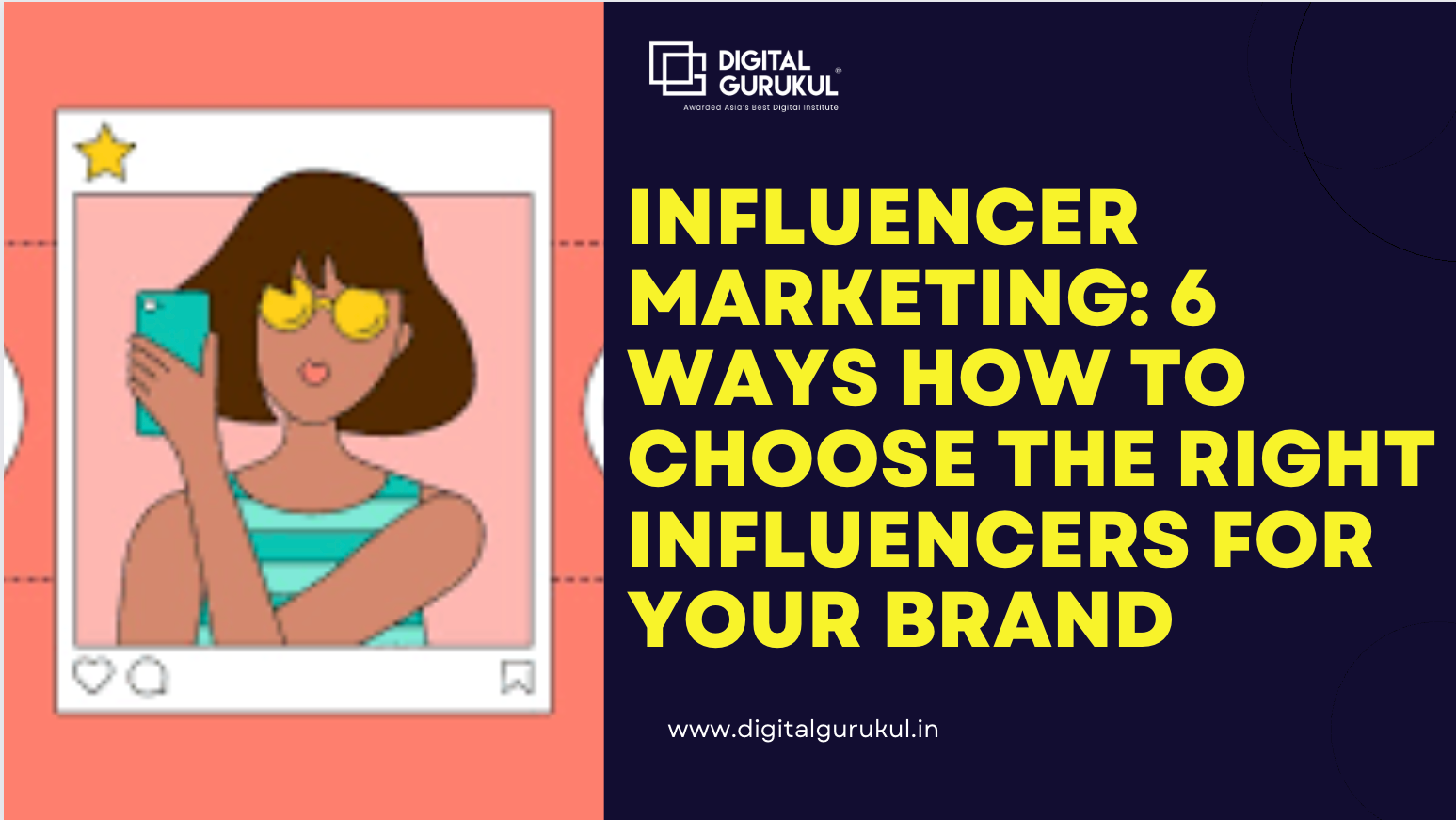Influencer marketing has become a powerful tool for brands looking to reach new audiences and build credibility. However, choosing the right influencers is crucial to the success of your campaign. Here’s how to select influencers who align with your brand and help you achieve your marketing goals.

Understand Your Target Audience
Before selecting influencers, it’s essential to understand your target audience. Who are they? What are their interests, preferences, and behaviors? Knowing your audience allows you to choose influencers who have a following that matches your target market. For example, if your brand targets young, tech-savvy consumers, partnering with a tech influencer with a similar audience will yield better results.
Define Your Campaign Goals
Clear campaign goals guide your influencer selection process. Are you aiming to increase brand awareness, drive sales, or promote a specific product? Your goals will influence the type of influencer you need. For brand awareness, consider influencers with a large, engaged following. For driving sales, look for influencers who have a track record of high engagement and conversion rates.
Evaluate Influencer Alignment with Your Brand
An influencer’s values, style, and content should align with your brand. Review their past posts, collaborations, and overall persona. Do they share content that resonates with your brand’s message? Authentic alignment ensures that the influencer can genuinely represent your brand, which builds trust with their audience and enhances the effectiveness of your campaign.
Consider Audience Engagement
While follower count is important, audience engagement is a more critical metric. An influencer with a smaller but highly engaged following can be more effective than one with a large but passive audience. Look at the influencer’s engagement rate, including likes, comments, shares, and overall interaction with their followers. High engagement indicates that the influencer has a loyal and active audience, which increases the chances of your campaign resonating with potential customers.
Assess Content Quality
The quality of an influencer’s content is a key factor in their ability to effectively represent your brand. Review their photos, videos, and captions to ensure they maintain a high standard. High-quality content not only looks professional but also reflects the influencer’s commitment to their work. Influencers who consistently produce quality content are more likely to create compelling and persuasive posts for your brand.
Analyze Previous Collaborations
Review the influencer’s past brand collaborations to see how they performed. Did those campaigns generate significant engagement or sales? Were the influencer’s followers receptive to the sponsored content? This analysis helps you gauge the potential success of your partnership. Avoid influencers who frequently promote products that don’t align with your brand, as this could dilute their influence and credibility.
Consider the Influencer’s Authenticity
Authenticity is crucial in influencer marketing. Audiences are quick to spot inauthentic endorsements, which can harm both the influencer’s and your brand’s reputation. Choose influencers who are genuinely passionate about your industry or product. Their enthusiasm will come across in their content, making the endorsement more credible and persuasive.
Look for Long-Term Partnerships
While one-off collaborations can be effective, long-term partnerships often yield better results. They allow the influencer to build a deeper connection with your brand, creating more authentic and consistent content. Long-term collaborations also help reinforce your brand’s message over time, increasing the likelihood of audience conversion.
Set Clear Expectations and Communication
Once you’ve selected the right influencer, establish clear expectations for the partnership. Define the goals, deliverables, timelines, and compensation upfront. Open communication ensures that both parties are aligned and can work together effectively. It also allows the influencer to provide input, which can enhance the creativity and success of the campaign.
Monitor and Measure Results
After launching your influencer campaign, monitor its performance closely. Track key metrics such as engagement, reach, conversions, and ROI. Analyzing these results helps you assess the effectiveness of the influencer and the campaign overall. Use this data to refine your strategy for future influencer partnerships, ensuring continuous improvement and success.
Conclusion
Choosing the right influencers for your brand is essential for a successful influencer marketing campaign. By understanding your target audience, defining clear goals, and evaluating influencers based on alignment, engagement, and content quality, you can select influencers who will effectively represent your brand. Prioritizing authenticity, considering long-term partnerships, and maintaining clear communication further enhances the effectiveness of your influencer marketing efforts.




